Patagonia refers to the southern part of South America, but it is a big area including about half (the southern half) of Argentina and Chile. I have only seen the southern tip, Tierra del Fuego, the Beagle Channel and Torres del Paine National Park in Chile.
Torres del Paine National Park is not easy to reach but it is gorgeous. It is most of the way to the tip of South America (google
map). That far south, snow line is very low. "Paine" in the name is an Indian word that has nothing to do with pain. It means blue.
Torre is Spanish for tower or steeple, so the name translates as "blue towers" because the ice on the steep mountains (see especially the odd-shaped peaks in the last photo) is glacial and has that odd blue color characteristic of glacial ice.
I was there in November of 2008, which wss late spring. The guanaco bush
Anarthrophyllum desideratum was flowering
 |
| guanaco bush |
They call it guanaco bush because in flower, in the distance, the clumps look like guanacos on the hillside. My pictures aren't convincing, but guanaco bushes in flower really do give illusion of guanacos resting on the hillside.
 |
| guanacos, Torres del Paine National Park, Chile |
Guanaco bush is a legume (Fabaceae) and endemic to southernmost South America.
The marshes had unfamiliar birds nesting.
The countryside was starkly beautiful:
Much of the vegetation was extremely spiny. Striking out across the countryside would likely have been aggravating as plant after plant grabbed at you.
 |
| spiny shrub |
This trip was the first time I'd seen a plant in the protea family, Proteaceae, in nature. The picture isn't terrific, but aren't the flowers glorious! This is firebush or Chilean firebush,
Embothrium coccinum, an evergreen shrub or small tree, the only plant in its genus and found only in Patagonia (though it is in cultivation in mild climates).
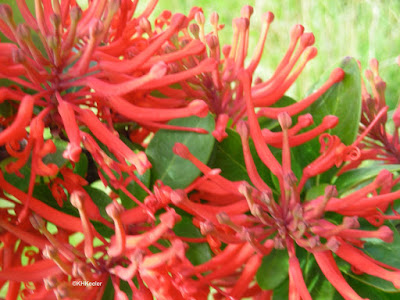 |
| firebush |
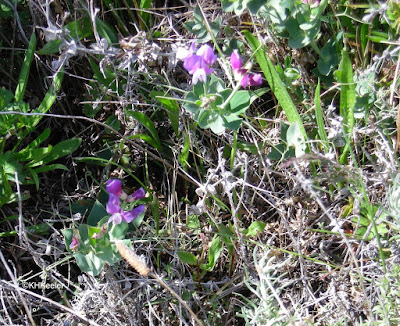 |
a small pea vine probably the Magellanic vetch,
Vicia magellanica, but there are 11 vetch species in Patagonia |
My photo doesn't do justice to how odd the flowers of topa topa (
Calceolaria uniflora, now in its own small family, Calceolariaceae) are because they're seen from the back. They're more than an inch long, yellow with red inside the shoe-shaped flower, a white band below and red dots above that. Click on link to get the real impact;
link. This genus is widespread in South America but confined to South America. Read more
link
 |
| topa topa, Calceolaria uniflora |
Below is a barberry, related to the barberries (
Berberis) of North America and Europe. I was feeling far from home, among unfamiliar plants, so I was delighted to guess "barberry?" and be right!
Berberis ilicifolia, holly-leaf barberry (barberry family, Berberidaceae). These are unripe fruits. The flowers are a rich yellow-orange, the fruits will get blue-black when ripe.
It was a really spectacular place!
Comments and corrections welcome
References
Calceolariaceae. Angiosperm Phylogeny Website.
link. Accessed 1/29/18.
Guerrido, C. and D. Fernandez. 2007. Flora Patagonia. FS Editorial Fantástico Sur. Punta Arenas, Chile.
Kathy Keeler, A Wandering Botanist
You might also like these blogs about that trip
A walk on Cape Horn
link
The end of the Pan American highway
link
Forests at the end of the Americas
link







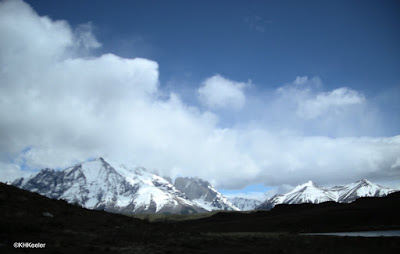
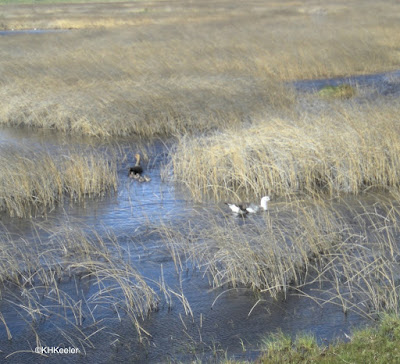



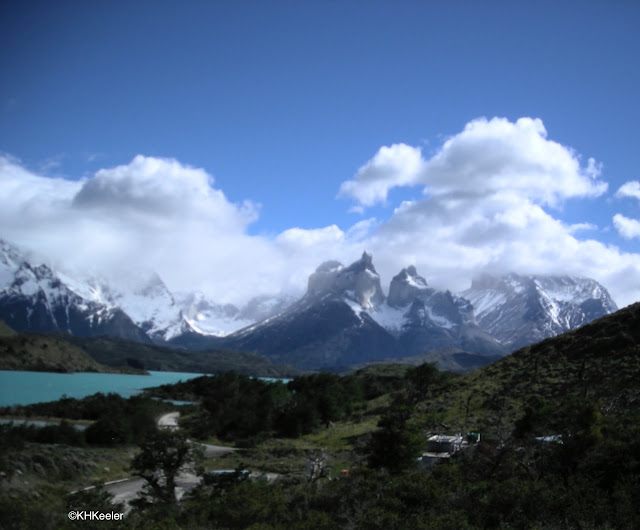
Beautiful pictures. I really like this place. To see this book now argentina patagonia tours
ReplyDelete